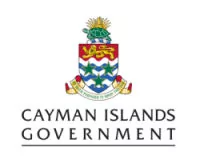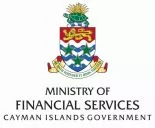The Cayman Islands Department of Environment (DoE) are currently collaborating on a project with longtime partner Royal Botanic Gardens Kew (RGB Kew), UK, to locate a mysterious Mistletoe species – Dendropemon caymanensis – known to be located only on Little Cayman.
There is very little known about this parasitic plant but records from botanist George Proctor, author of Flora of the Cayman Islands, indicate that it is possibly located within the northeastern interior of Little Cayman and is a parasite of the Headache Bush (Capparis cynophallophora) and the Black Candlewood (Erithalis fruticosa). No one has seen this plant since 1991 and there is no photographic record – just a single herbarium collection as proof of its existence.
In order to find this plant, the DoE and RGB Kew used a mini unmanned aerial vehicle (UAV). The UAV is a small flying vessel with a camera; it weighs less than a kilogram and is controlled by a sophisticated remote computer system. It takes aerial photographs on a pre-programmed course, mapped using GPS coordinates.
The search team included DoE's Research Officers Jessica Harvey and Jane Haakonsson, and GIS Officer Jeremy Olynik; and RGB Kew's Species Conservation Assessment Officer Steven Bachman and Kew's GIS Officer Justin Moat; and from the Blue Iguana Recovery Programme (BIRP), Frederic Burton, acting as the local plant specialist. Mr Moat and Mr Bachman are highly trained and certified UAV pilots with previous experience in the UK and Peru, and both are off to Burkina Faso after their trip to Cayman.
The DoE worked closely with the Civil Aviation Authority (CAA) to establish and follow all safety protocols. This included ensuring all launch and search sites were inspected and approved by the CAA prior to the project start date.
Approval also was granted by the Lands and Survey Department, and all flights were coordinated and approved by the Grand Cayman and Cayman Brac Air Traffic Control towers prior to takeoff. This is very important as flying UAVs without authorisation could be a hazard to all types of aircrafts, including police helicopters and mosquito jets. Launching and landing sites were also granted permission from the relevant land owners.
Survey areas included the Colliers Reserve and Salina Reserve in Grand Cayman, where locations of the host plant species are already known. Images taken from these areas will be compared with images taken in Little Cayman. The project will also allow the DoE to try a new method of monitoring the booby colony in the Booby Reserve on Little Cayman, which could prove highly time and energy efficient compared to previous monitoring techniques.
Upon completion of this project the DoE hopes to determine the true status of the endemic Dendropemon caymanensis in the Cayman Islands, while also gathering data on the current status of the booby breeding area in the Booby Pond Reserve.
This project was possible with assistance from the Mohamed Bin Zayed Conservation Group, which donated just more than US$3,000 to the project through a grant; the Cayman Islands National Trust including BIRP; the CAA; and RGB Kew.
This project started on 12 June and was completed on 19 June. For more information, contact the DoE at doe@gov.ky , at 949-8469 during working hours or on our Facebook page.
The content of this article is intended to provide a general guide to the subject matter. Specialist advice should be sought about your specific circumstances.

